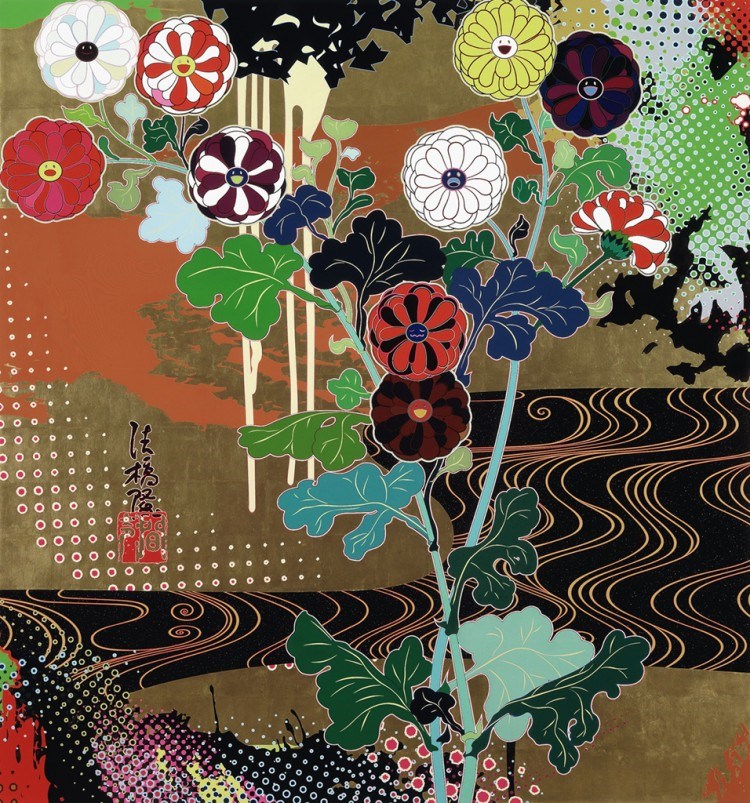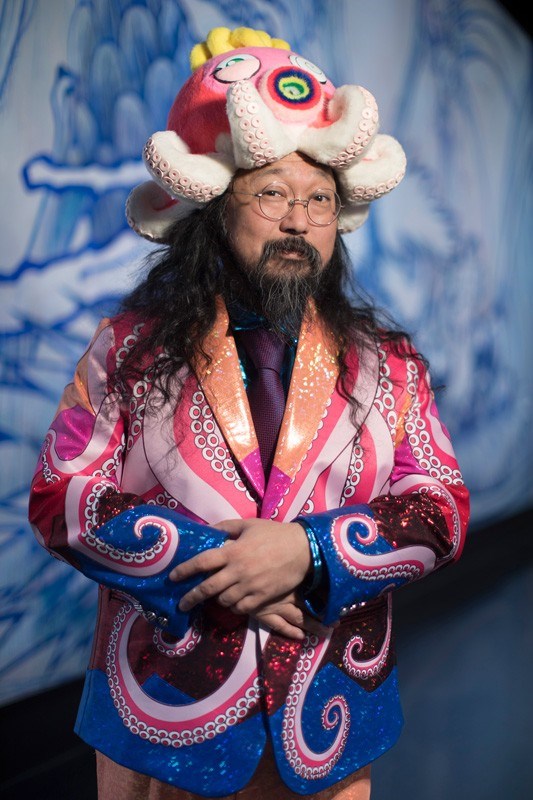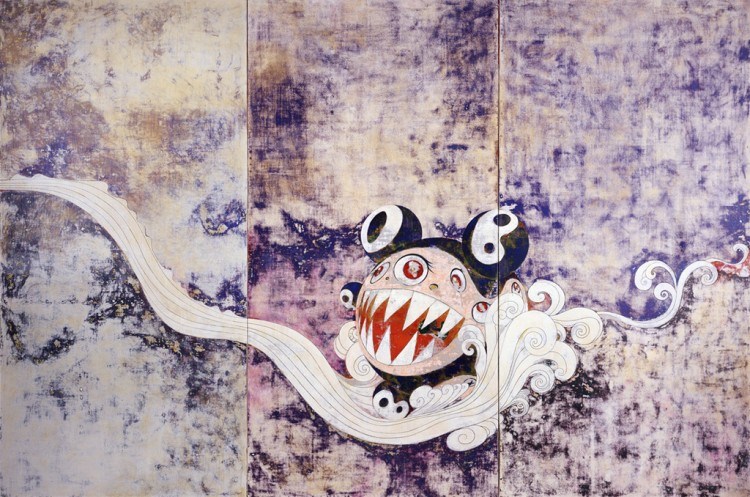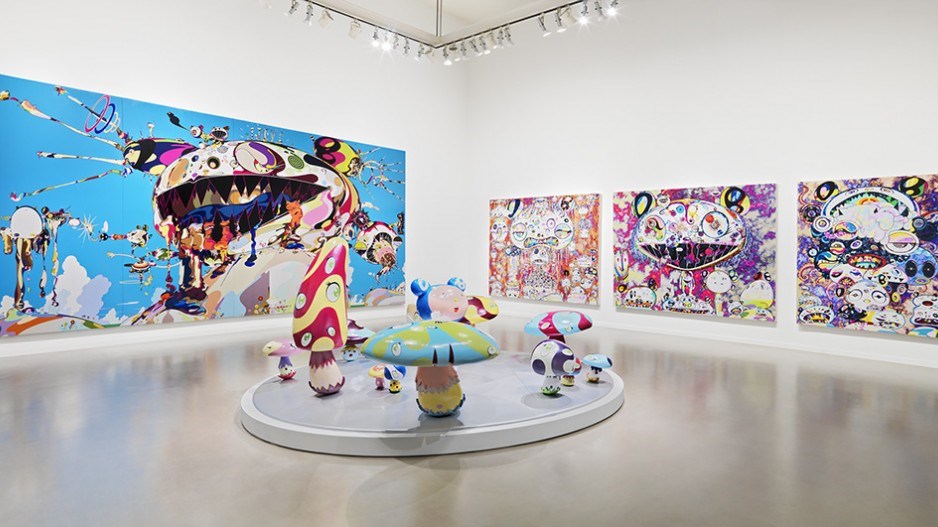Stress. Everyone has it, and there are a variety of ways to deal with it, from exercise and meditation to overindulgence in alcohol, drugs, food, etc. If you are an octopus, your main reaction to stress is to turn on yourself – you begin to eat your own body.
You are not an octopus, but you have stress; why not relieve some of that stress by heading to the Vancouver Art Gallery and enjoying the products of someone else’s stress?
Takashi Murakami was trained in traditional Japanese painting but has garnered fame through his commercial pop art aesthetic – he has collaborated with Kanye West, Pharrell Williams and Louis Vuitton, among others. He is working with the concept of consuming himself in the first major retrospective of his work in Canada, with Takashi Murakami: The Octopus Eats Its Own Leg, now at the Vancouver Art Gallery until May 6.

Takashi Murakami
Kansei Gold, 2008
acrylic and gold leaf on canvas
Private Collection
© 2008 Takashi Murakami/Kaikai Kiki Co., Ltd. All Rights Reserved.
Photo: Joshua White/JWPictures.com, Courtesy of the Artist and Blum & Poe, Los Angeles/New York/Tokyo
Murakami fuses traditional Japanese techniques with explosive pop art and anime; his dedication to details is a complete delight. His work needs to be seen up close and in person to truly appreciate even a fraction of what he has going on; this man is a whirlwind of structured technique, hallucinogenic hyper-reality and contained excess.

Takashi Murakami: businessman
Photo: Maria Ponce Berre © MCA Chicago
Murakami is also a businessman. He is the founder of the art production and management company Kaikai Kiki. It’s pure math – one person alone cannot produce the massive works of art Murakami is known for. He needs a team, he needs space for his team to work in and his team needs to get paid. The business of making art is not quite the same as putting out a newspaper or running a mining company, but there are still high stakes, reputation management and immoveable deadlines.

Takashi Murakami
727, 1996
acrylic on canvas mounted on board
The Museum of Modern Art, New York.
Gift of David Teiger, 2003, 251.2003.a-c
© 1996 Takashi Murakami/Kaikai Kiki Co., Ltd. All Rights Reserved.
Photo: Tom Powell Imaging
Within the exhibit itself is proof of the stress Murakami is under. He was unable to finish some works for this exhibit on time, but they are still on display. On my first visit to the exhibit on opening weekend, neither I nor my companion noticed the unfinished business. It wasn’t until we went on a tour (included in the price of admission, and highly recommended) a couple of weeks later that we learned this detail, allowing for an entirely new perspective.
A section of the exhibit is dedicated to showing the mechanics behind the work, with videos of Murakami’s assistants working on huge screen prints and sculptures. Getting a quick peek into some of the space needed to create these works is fascinating.
On Friday, March 16, the latest edition of the Vancouver Art Gallery’s art party, FUSE: Transcendence/Destruction, takes place, with live performances and music in the gallery’s spaces, allowing you to mix and mingle with some of Vancouver’s movers and shakers while also taking in the Murakami exhibit, as well as the other exhibits on offer at the gallery.
Takashi Murakami: The Octopus Eats Its Own Leg is organized by the Museum of Contemporary Art Chicago (MCA) and curated by MCA chief curator, Michael Darling. The exhibit runs at the Vancouver Art Gallery until May 6.




